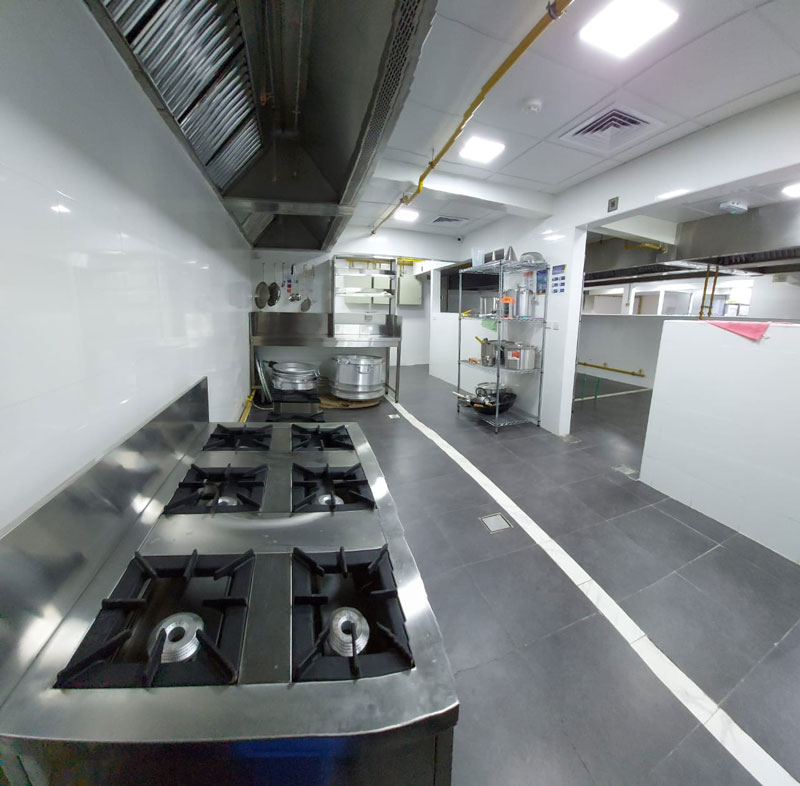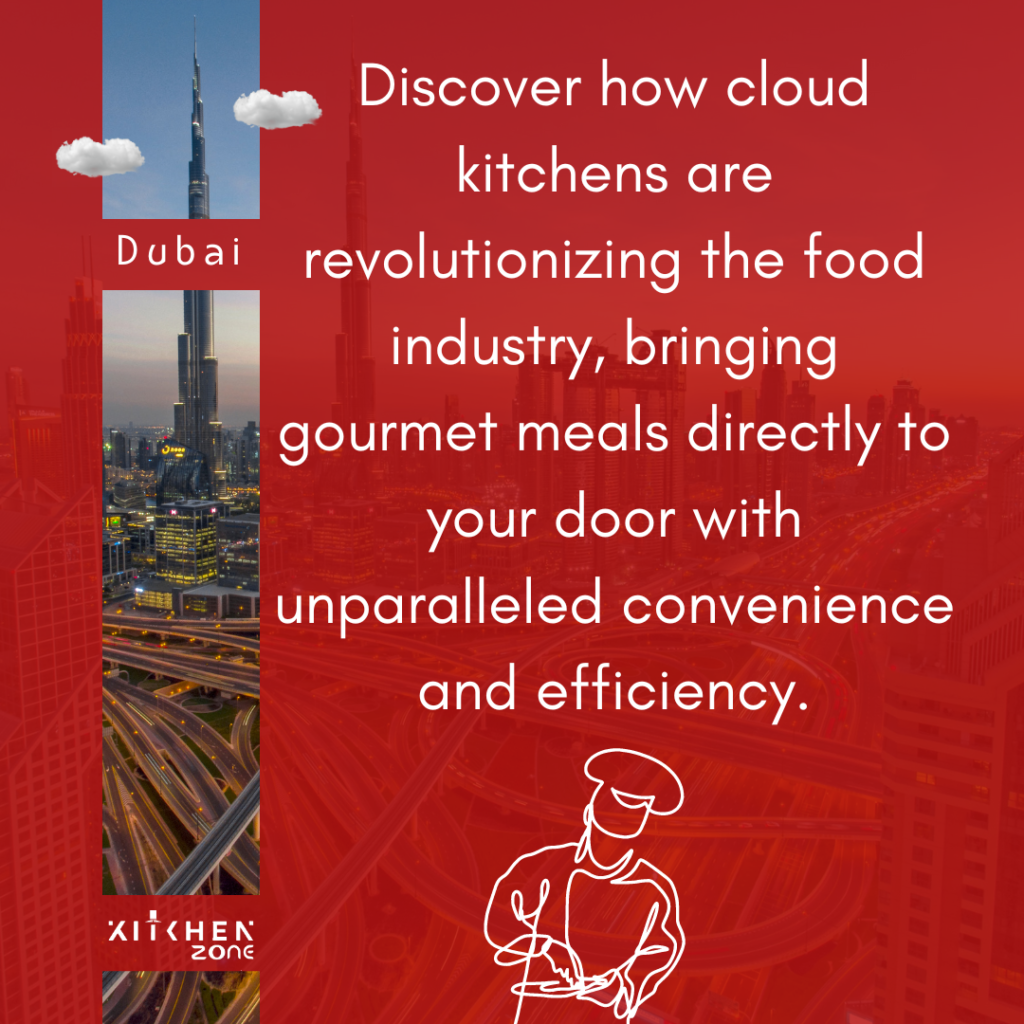Table of Contents
The Ultimate Guide to Finding the Best Affordable Cloud Kitchens for Your Food Business
Welcome to the ultimate guide to finding the best affordable cloud kitchens for your food business. Whether you’re a budding entrepreneur or an experienced restaurateur looking to expand your reach, this comprehensive guide will walk you through everything you need to know about cloud kitchens and how to choose the right one for your unique needs.
In today’s fast-paced digital world, cloud kitchens have emerged as a cost-effective and efficient solution for food businesses of all sizes. With the rise of food delivery apps and the increasing demand for convenience, cloud kitchens provide a platform for entrepreneurs to operate virtual restaurants without the need for a dine-in space. By leveraging the power of technology and data-driven insights, cloud kitchens enable businesses to streamline their operations, reduce overhead costs, and cater to the ever-growing customer base.
In this guide, we will delve into the key factors you should consider when selecting an affordable cloud kitchen, including location, infrastructure, amenities, and pricing models. We will also provide you with expert tips and advice to help you make an informed decision that aligns with your budget and business goals.
So, if you’re ready to take your food business to new heights, let’s dive into the world of affordable cloud kitchens and find the perfect fit for your culinary dreams.
Benefits of using cloud kitchens for your food business
Cloud kitchens, also known as ghost kitchens or virtual kitchens, have become a transformative force in the food industry, offering numerous advantages for entrepreneurs and established restaurateurs alike. One of the most significant benefits is the reduced overhead costs associated with traditional restaurant setups. With cloud kitchens, there’s no need for expensive real estate or front-of-house operations. This allows food businesses to allocate their budgets more effectively toward marketing, quality ingredients, and staff training, ultimately enhancing the overall customer experience.
Another key advantage of cloud kitchens is their flexibility and scalability. Entrepreneurs can experiment with various cuisines and menu items without the financial risk of a full-scale restaurant. This adaptability is crucial in today’s fast-paced market, where consumer preferences can shift rapidly. If a particular dish gains popularity, operators can quickly ramp up production or even launch new concepts in the same kitchen space. This kind of agility can give food businesses a significant edge over competitors who may be tied to traditional dining establishments.
Additionally, cloud kitchens are designed to cater specifically to the growing demand for food delivery services. As online food ordering continues to soar, having a dedicated kitchen space that focuses solely on preparing meals for delivery can streamline operations. Many cloud kitchens come equipped with advanced technology for order management, inventory tracking, and customer relationship management, ensuring that operators can efficiently manage their food business while enhancing customer satisfaction through timely delivery and high-quality meals.
Factors to consider when choosing an best affordable cloud kitchens
When it comes to selecting an affordable cloud kitchen, several critical factors should be taken into account to ensure that the chosen facility aligns with your business needs. First and foremost, consider the kitchen’s physical layout and equipment. The space should be adequately equipped to handle the volume and type of food you intend to prepare. Check for essential appliances, such as ovens, stoves, refrigerators, and storage areas. A well-designed kitchen can significantly enhance operational efficiency and food safety standards.
Another important aspect is the technology infrastructure available in the cloud kitchen. Many modern cloud kitchens integrate advanced order management systems, inventory tracking software, and customer relationship management tools. These technologies can streamline your operations and provide valuable data insights that can help you make informed decisions about menu offerings and marketing strategies. Ensure that the kitchen you choose supports the necessary technology to meet your business goals and enhance customer interactions.
Lastly, consider the flexibility of the rental terms and conditions offered by the cloud kitchen. Look for arrangements that allow for scalability or short-term leases, as this will enable you to adapt to changing market conditions or customer preferences. Some kitchens may offer shared spaces or the option to rent additional kitchen time during peak hours. Evaluating these factors will help you find a cloud kitchen that not only fits your budget but also supports your long-term business growth.
Researching local cloud kitchen options
Researching local cloud kitchen options is crucial in identifying the best fit for your food business. Start by exploring online platforms and directories that specialize in listing best affordable cloud kitchens. Many of these platforms provide detailed information, including kitchen specifications, pricing, and available services. Utilizing these resources can save you time and help you compare different facilities in your area quickly.
Next, tap into local food industry networks and communities. Engaging with other food entrepreneurs can provide valuable insights into their experiences with various cloud kitchens. They may recommend specific facilities that they have found to be beneficial or caution you against those that do not meet their expectations. Additionally, attending industry events or networking meetups can expose you to potential partnerships and collaborative opportunities within the best affordable cloud kitchens space.
Finally, consider visiting the shortlisted best affordable cloud kitchens in person. A physical visit allows you to assess the cleanliness, organization, and overall atmosphere of the kitchen. Speak with the management staff to understand their support services, including marketing assistance, staff training, and logistics. Gathering firsthand information will equip you with a comprehensive view of each option and help you make an informed choice for your food business.
Evaluating the infrastructure and facilities of a cloud kitchen
The infrastructure and facilities of a cloud kitchen play a pivotal role in its ability to support your food business effectively. When evaluating a best affordable cloud kitchens, start by inspecting the kitchen layout and workflow. An efficient design minimizes movement and maximizes productivity, allowing staff to prepare meals swiftly and efficiently. Look for designated areas for food prep, cooking, plating, and cleaning to ensure that operations can flow smoothly without congestion.
Next, consider the quality and variety of equipment available in the kitchen. The appliances should be suited to the type of cuisine you will be offering. For instance, if you plan to serve fried foods, ensure that there are adequate fryers and ventilation systems in place. Additionally, check for the availability of specialized equipment that may be necessary for your menu items, such as pizza ovens, steamers, or sous-vide machines. The right tools can significantly improve the quality of your food and speed up production times.
Moreover, assess the compliance with health and safety regulations. Cloud kitchens must adhere to strict food safety standards, and it’s crucial to ensure that the kitchen you choose is up-to-date with local health codes. Inquire about the kitchen’s sanitation practices, pest control measures, and employee training programs. A kitchen that prioritizes safety not only protects your customers but also mitigates potential liabilities for your business.
Understanding the pricing models of cloud kitchens
Understanding the pricing models of cloud kitchens is essential for budgeting and financial planning. Different cloud kitchens may offer varying pricing structures, which can significantly affect your overall costs. Common pricing models include fixed monthly rent, revenue share agreements, and pay-per-use systems. Each model has its pros and cons, so it’s vital to evaluate which one aligns best with your business strategy and projected sales volume.
Fixed monthly rent provides predictability in your expenses, making it easier to plan your budget. However, this model may require a higher upfront investment, especially if the kitchen is in a prime location. On the other hand, revenue share agreements allow you to pay a percentage of your sales, which can be advantageous during slower months. This model can reduce financial pressure during initial growth phases, but it may become costly as your business scales.
Pay-per-use pricing is another flexible option, allowing you to rent kitchen space based on your usage. This model is particularly beneficial for businesses with fluctuating demand or those testing new concepts. However, it’s essential to be mindful of how usage fees can accumulate over time. Carefully reviewing the terms and conditions of each pricing model will help you select the most suitable option for your food business while ensuring sustainability in the long run.
Assessing the location and accessibility of a cloud kitchen
The location and accessibility of a cloud kitchen are critical factors that can directly influence your business’s success. A strategically located cloud kitchen can provide significant advantages, including proximity to your target market and major delivery routes. Ideally, the kitchen should be situated in an area with high population density and a demographic that aligns with your customer base. This positioning can enhance your delivery efficiency and reduce transportation costs.
Accessibility is another crucial consideration. Ensure that the best affordable cloud kitchens has convenient access for delivery drivers and staff. A facility located near major roads or highways can facilitate quicker deliveries, thereby improving customer satisfaction. Additionally, consider the availability of parking or loading zones, as these can impact your operations during peak hours when multiple deliveries are scheduled.
Furthermore, evaluate the surrounding competition in the area. While being close to competitors can be advantageous due to shared customer bases, it’s essential to assess whether your unique offerings can stand out in that market. Understanding the competitive landscape will help you refine your marketing strategies and identify potential partnerships with other local food businesses, ultimately enhancing your chances of success.
Reviews and feedback from other food businesses
Gaining insights from reviews and feedback from other food businesses is an invaluable step in your decision-making process. When considering a cloud kitchen, start by looking for online reviews from current and former tenants. These reviews can provide firsthand accounts of the kitchen’s operational capabilities, management responsiveness, and overall satisfaction levels. Pay close attention to recurring themes in the feedback, as they can highlight both strengths and weaknesses of the facility.
In addition to online reviews, consider reaching out directly to other food businesses that have used the best affordable cloud kitchens you’re interested in. Personal interviews or informal conversations can yield deeper insights that may not be captured in written reviews. Ask about their experiences regarding the kitchen’s equipment, support staff, and any challenges they faced during their time there. These discussions can help you gauge whether the kitchen aligns with your operational needs and expectations.
Finally, don’t overlook the importance of social media in gathering feedback. Many food businesses engage with their audiences on platforms like Instagram and Facebook, sharing their experiences with various best affordable cloud kitchens. By following relevant hashtags and engaging in food entrepreneur communities, you can gather real-time insights and recommendations that can inform your decision. Leveraging this information will empower you to make a more educated choice for your food business.
Negotiating the terms and conditions of a cloud kitchen rental
Negotiating the terms and conditions of a cloud kitchen rental is a critical step in securing a beneficial arrangement for your food business. Start by thoroughly reviewing the lease agreement and identifying any areas that may require clarification or adjustment. Key components to focus on include rental rates, payment schedules, and the duration of the lease. Be prepared to discuss your specific needs and how they may differ from the standard terms offered by the kitchen.
Additionally, consider negotiating for added benefits that can enhance your operational efficiency. For instance, you might request access to additional storage space or specific equipment that is not included in the standard rental package. Negotiating these terms can provide you with the resources necessary to meet your business goals while minimizing extra costs.
Lastly, don’t hesitate to discuss the possibility of flexible rental terms. If your business is in a growth phase, you may want to negotiate options for scaling up your kitchen space or extending your lease without significant penalties. Establishing a good rapport with the kitchen management can facilitate smoother negotiations and lead to a mutually beneficial arrangement that supports your food business’s success.
Conclusion: Making an informed decision for your food business
In conclusion, finding the best affordable cloud kitchens for your food business requires careful consideration and thorough research. By understanding the benefits of cloud kitchens, evaluating key factors such as infrastructure, location, and pricing models, and gathering insights from other food businesses, you can make an informed decision that aligns with your culinary vision and business goals.
Remember that the right cloud kitchen not only provides the physical space needed to prepare meals but also offers the support systems that can help your business thrive in a competitive market. Take the time to visit potential kitchens, engage in discussions with management and staff, and ensure that the kitchen’s offerings align with your operational needs.
Ultimately, the decision you make in choosing a best affordable cloud kitchens can significantly impact the success of your food business. By investing in the right kitchen space, you are setting the foundation for culinary creativity, customer satisfaction, and sustainable growth in the ever-evolving food industry. Embrace the opportunities that best affordable cloud kitchens present and take the next step in realizing your culinary dreams.





